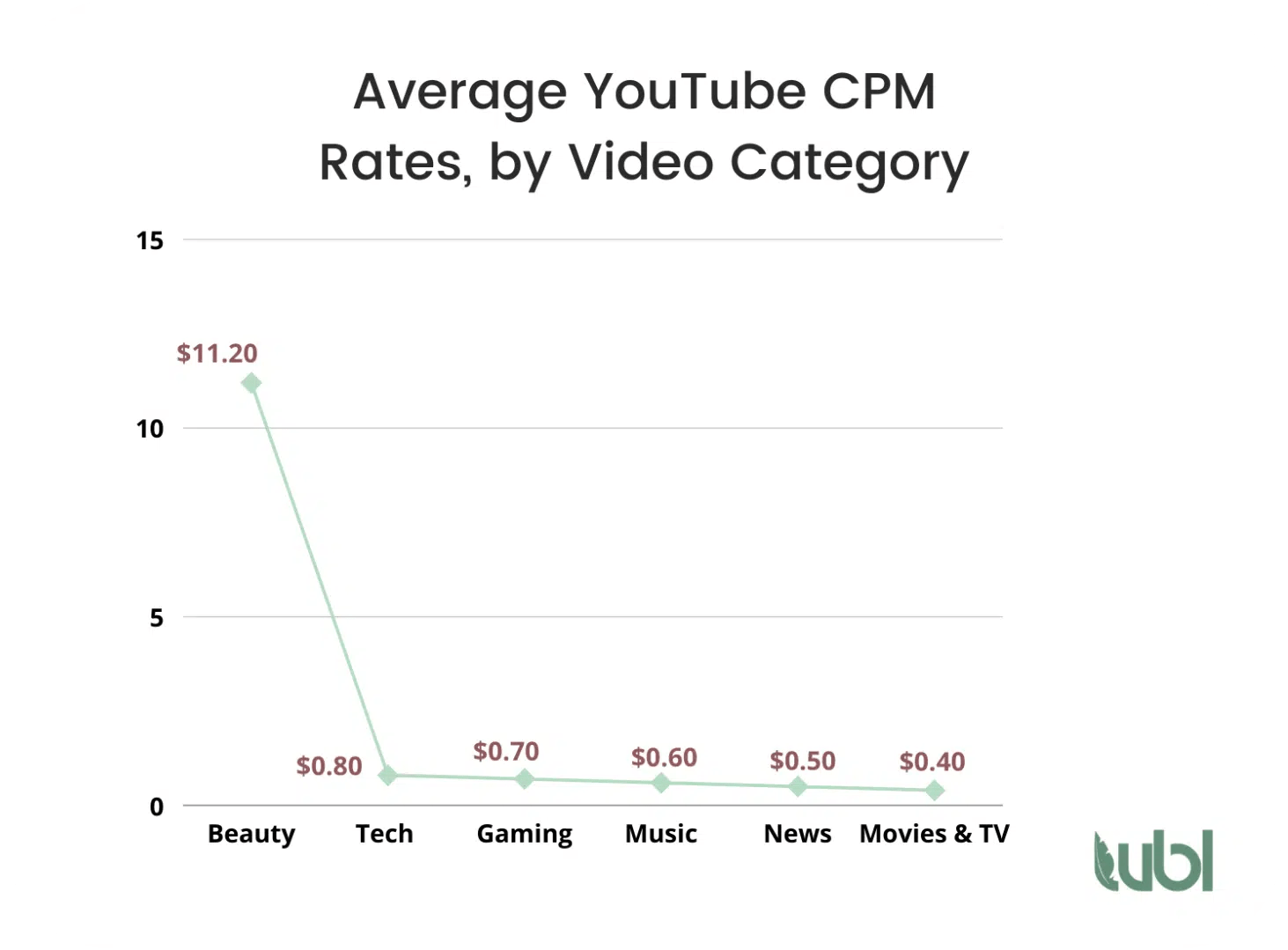The average CPM for YouTube is a crucial metric for content creators and marketers alike who want to maximize their revenue from video advertising. In today’s digital age, understanding how CPM (Cost Per Mille) works can make a significant difference in how much revenue you can generate from your YouTube channel. Whether you are a seasoned YouTuber or just starting out, knowing the average CPM can help you plan your content strategy, target the right audience, and ultimately increase your earnings.
In this article, we will delve deep into the concept of CPM, explore what influences it, and provide you with vital statistics and strategies to improve your earning potential on YouTube. By the end of this comprehensive guide, you will be equipped with the knowledge to navigate the complexities of YouTube monetization effectively.
We will also discuss how the YouTube algorithm works concerning CPM, the importance of audience engagement, and how to select the right type of ads for your content. So, whether you're looking to optimize your current videos or just starting to monetize your content, read on to uncover everything you need to know about the average CPM for YouTube.
Table of Contents
- What is CPM?
- Average CPM for YouTube
- Factors Affecting CPM
- CPM and Audience Engagement
- How to Increase Your CPM
- YouTube Monetization Policy
- Case Studies: Real-World Examples
- Conclusion
What is CPM?
CPM, or Cost Per Mille, refers to the amount advertisers pay for every 1,000 impressions of their ad. This metric is crucial for YouTube content creators as it directly impacts their earnings from ad revenue. Understanding CPM helps creators assess the profitability of their content and make informed decisions about their advertising strategies.
How CPM Works on YouTube
On YouTube, CPM is calculated based on the revenue generated from ads divided by the number of views (in thousands) of the videos. For creators, this means that higher CPM values can lead to greater earnings, but it also depends on various factors, such as the type of content, the audience demographics, and the advertisement types.
Average CPM for YouTube
The average CPM for YouTube can vary significantly based on multiple factors. On average, YouTube CPM rates range from $0.25 to $4.00, but some niches can see CPMs as high as $10 or more. This variability makes it essential for creators to understand their specific niche and audience to maximize their potential earnings.
Industry-Specific CPM Averages
- Finance: $10 - $30
- Health & Fitness: $5 - $15
- Technology: $5 - $20
- Travel: $3 - $10
- Entertainment: $2 - $5
Factors Affecting CPM
Several factors influence the CPM rates on YouTube, including:
- Content Niche: Different niches attract different advertisers, leading to varying CPM rates.
- Audience Demographics: The age, location, and interests of your audience can significantly affect CPM rates.
- Ad Types: Certain ad formats, such as skippable ads, non-skippable ads, and bumper ads, come with different CPM rates.
- Seasonality: CPM rates can fluctuate based on seasonal demand, particularly during holidays.
CPM and Audience Engagement
Audience engagement plays a crucial role in determining CPM rates. Higher engagement rates typically lead to better ad performance, resulting in increased CPM. Here are some key points to consider:
- Watch Time: Longer watch times usually correlate with higher CPMs.
- Likes and Comments: Engaged viewers are more likely to interact with ads, improving CPM.
- Subscriber Growth: A growing subscriber base indicates a dedicated audience, which can attract higher-paying advertisers.
How to Increase Your CPM
To maximize your YouTube earnings, consider the following strategies to increase your CPM:
- Focus on High-Value Niches: Create content in niches known for higher CPM rates.
- Optimize Video Length: Longer videos can incorporate more ads, potentially increasing CPM.
- Engage with Your Audience: Foster community through comments and social media to boost engagement.
- Experiment with Ad Formats: Try different ad types to see what works best for your audience.
YouTube Monetization Policy
Understanding YouTube's monetization policy is crucial for creators aiming to earn revenue through CPM. The platform has specific eligibility criteria, including:
- Must have at least 1,000 subscribers.
- Must have 4,000 watch hours in the past 12 months.
- Must comply with all YouTube monetization policies.
Case Studies: Real-World Examples
To illustrate the impact of CPM on YouTube earnings, let's look at a few case studies:
- Finance Channel: A finance channel with a CPM of $25 generated significant revenue due to high advertiser demand.
- Travel Vlogger: A travel vlogger with a CPM of $5 saw lower earnings but capitalized on sponsorships and affiliate marketing.
Conclusion
Understanding the average CPM for YouTube is essential for creators looking to optimize their revenue strategies. By focusing on high-value niches, engaging with audiences, and experimenting with ad formats, you can significantly increase your CPM and overall earnings. Remember to stay updated with YouTube's monetization policies and trends to ensure long-term success.
We invite you to share your thoughts and experiences regarding CPM in the comments below. If you found this article helpful, please consider sharing it with fellow creators or checking out our other articles for more insights!
Ready to Boost Your YouTube Earnings?
Start implementing these strategies today, and you’ll be well on your way to maximizing your YouTube revenue!
Is Izzy Zapata In A Relationship? Discover The Truth About Her Love Life
Megan Is Missing: The Controversial Photos 1 And 2 Explained
Who's Gay On Impractical Jokers? Exploring The Personal Lives Of The Cast


